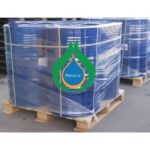Why is dust control important?
- Road officials must contend with higher maintenance costs because a dusty road is a deteriorating road. Once the fine material is lost, the load-bearing aggregate will soon follow. Loss of fines and aggregate results in ruts, potholes and washboards that require costly spot repairs and frequent bladings to keep the road in acceptable condition.
- Road users face the serious safety issue of reduced visibility and also the prospect of loose gravel causing cracked windshields, chipped paint and/or broken headlights.
- Local residents must contend with large quantities of dust drifting into their living environment, reducing their quality of life and increasing their chances of developing respiratory health problems. Why use calcium chloride for dust control?
- Calcium chloride attracts moisture from the air, keeping the road damp even under hot, dry conditions. The moisture film provides a cohesive force that binds aggregate particles together, resulting in a hard and compact surface.
- A beneficial residual effect accumulates with consistent application year after year. As calcium chloride becomes established deeper in the road base, stability improves and frost damage is prevented.
- Calcium chloride manufactured by OxyChem has been used for dust control applications since the early 1920’s. No other dust control product comes close to this level of proven performance. How can road managers with tight budgets justify expenditures for dust control with calcium chloride? Several years ago, road managers in South Africa asked this question and subsequently launched a series of field trials to collect the necessary data to develop an answer.1 Here are some of the results from their work. · Blading frequency of roads treated with calcium chloride decreased by about 50% and the expected interval between regraveling increased from 7 to 14 years.
- A cost/benefit analysis of various maintenance alternatives for a road with 342 ADT indicated that annual application of calcium chloride with a 90 day blading cycle maximized the economic benefits for road managers and road users.
- The greatest economic benefits were realized when aggregate replacement costs and ADT are both high. This work shows that a dust control program with calcium chloride can be considered an investment that provides a good rate of return, in addition to improving the quality of life for road users and neighbors alike.




